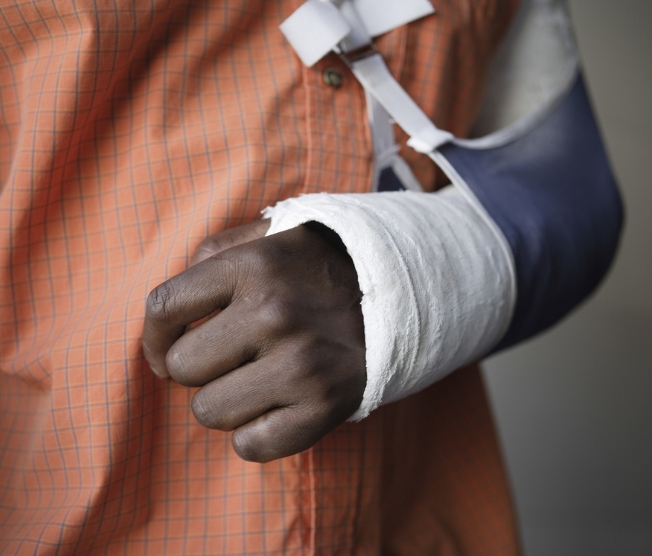 Aging brings about changes that increase health risks, including osteoporosis, vision decline, cognitive changes and balance issues. These factors can raise the likelihood of fractures and make recovery a longer, more challenging process.
Aging brings about changes that increase health risks, including osteoporosis, vision decline, cognitive changes and balance issues. These factors can raise the likelihood of fractures and make recovery a longer, more challenging process.
From the diagnostic process to therapeutic interventions, West Hartford Health & Rehabilitation offers a comprehensive approach to help you regain strength and mobility.
Our services include physical and occupational therapy, nutritional guidance, gait training and support for activities of daily living.
What Is a Fracture?
A fracture, also known as a broken bone, occurs when a force exceeds the bone’s capacity to absorb impact. Common causes include falls, car accidents or repetitive stress from activities like running or physically demanding work. Fractures can be:
- Open (Compound): The bone breaks through the skin, increasing the risk of infection and complications.
- Closed (Simple): The bone breaks or shatters without puncturing the skin, though bruising and swelling may still be visible.
A doctor will also determine if the fracture is:
- Displaced: The bone has moved from its normal position, disrupting alignment.
- Non-Displaced: The bone remains properly aligned or partially intact.
Depending on the type and severity of the fracture, you may need to wear a splint, cast or brace, or undergo surgery to properly align and stabilize the bone.
Causes and Symptoms of a Fracture
Fractures commonly occur due to sharp, sudden impacts or repetitive stress or overuse.
For older adults, additional factors contribute to fracture risk:
- Low Bone Density: Weakening bones are more likely to break from simple actions like twisting or standing improperly.
- Medication Use: Sedatives or sleep aids can increase fall risk by causing drowsiness or impaired coordination.
- Nutritional Deficiencies: Insufficient levels of vitamin D and calcium compromise bone strength, making fractures more likely.
Signs of a fracture include:
- Sudden intense and persistent pain.
- Swelling, redness, warmth, bruising or tenderness around the injury.
- Visible deformity or noticeable bumps in the affected area.
- Limited mobility or inability to use the injured limb effectively.
Fracture Treatment
Prompt treatment is essential to prevent complications and support proper healing. After evaluating the injury, your doctor may use imaging tests or bone scans to diagnose the fracture. Treatment options include:
- Immobilization: Using a splint, cast or orthotic device to keep bones aligned and reduce movement during recovery.
- Medication: Pain relievers to manage discomfort and reduce swelling.
- Traction: A system of pulleys and weights designed to gradually stretch muscles and align bones, minimizing risks like blood clots, infection and bone deformities.
- Surgery: For complex fractures, your doctor may use fixation devices like pins, screws or plates to stabilize the bone until it heals.
- Footwear Support: Specialized fracture boots or orthotics to reduce pressure and promote proper alignment.
Fracture Rehabilitation
Once your cast, brace or splint is removed, it’s common to experience stiffness, muscle atrophy and limited range of motion. Rehabilitation helps restore strength, flexibility and functionality in the affected area. Our approach includes:
- Training with assistive devices like crunches or a cane to limit weight-bearing on the injured area.
- Targeted exercises to rebuild muscle strength, improve joint flexibility and reduce future injury risks.
- Balance and gait training to regain natural movement patterns and reduce fall risks.
- Posture and core-strengthening exercises to promote healing and prevent further injuries.
At West Hartford Health & Rehabilitation, we offer compassionate care to guide your recovery.




